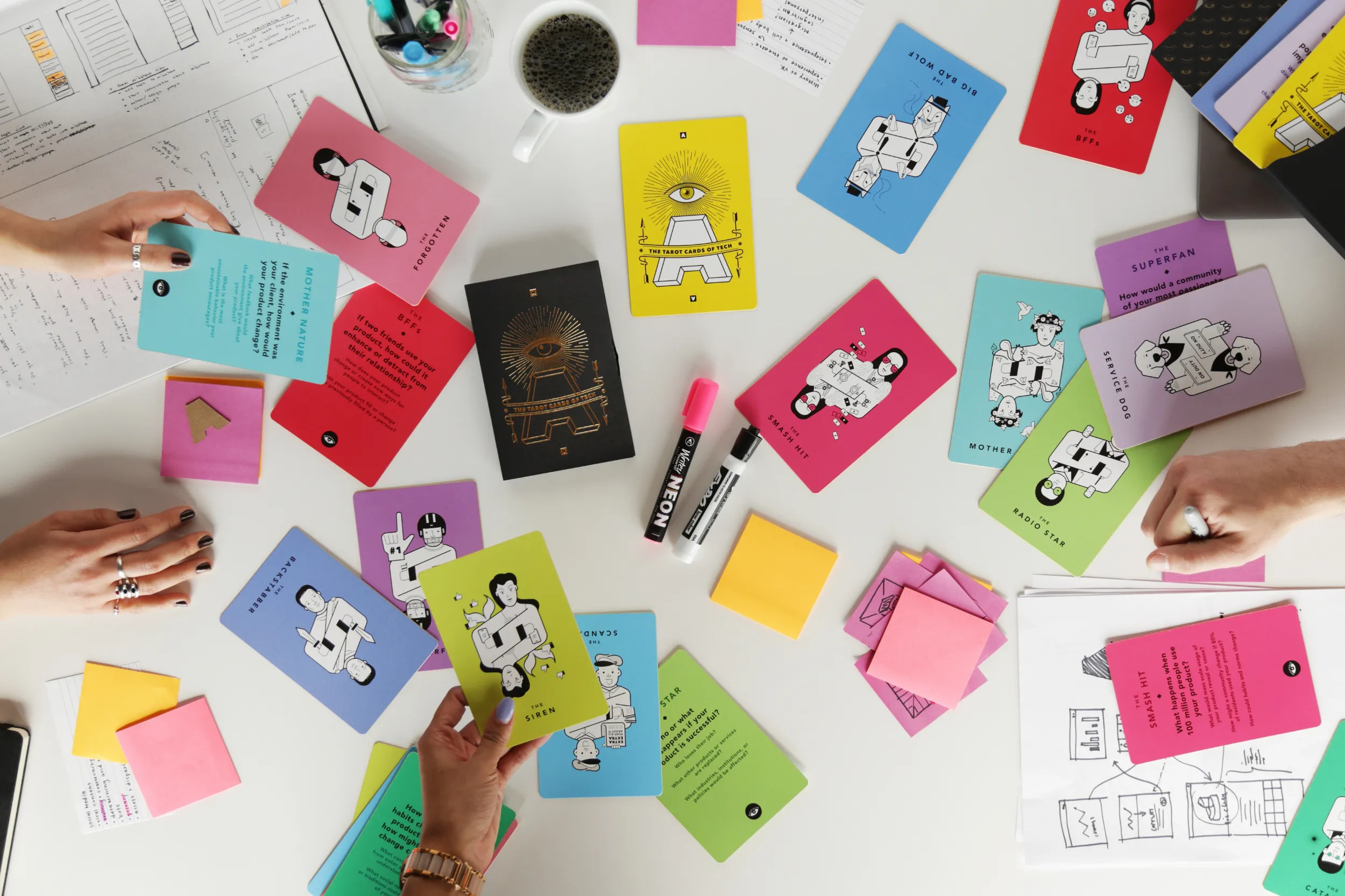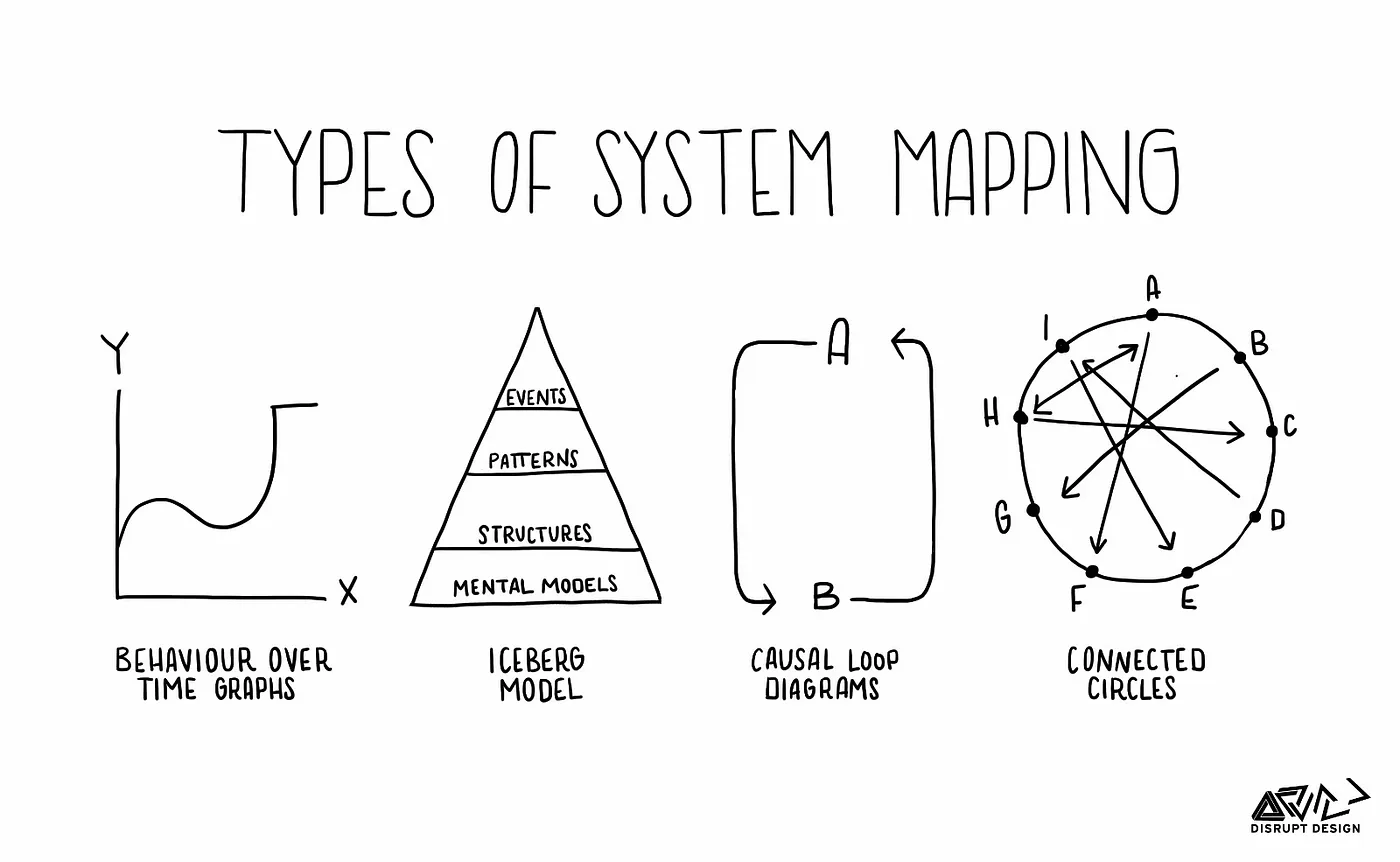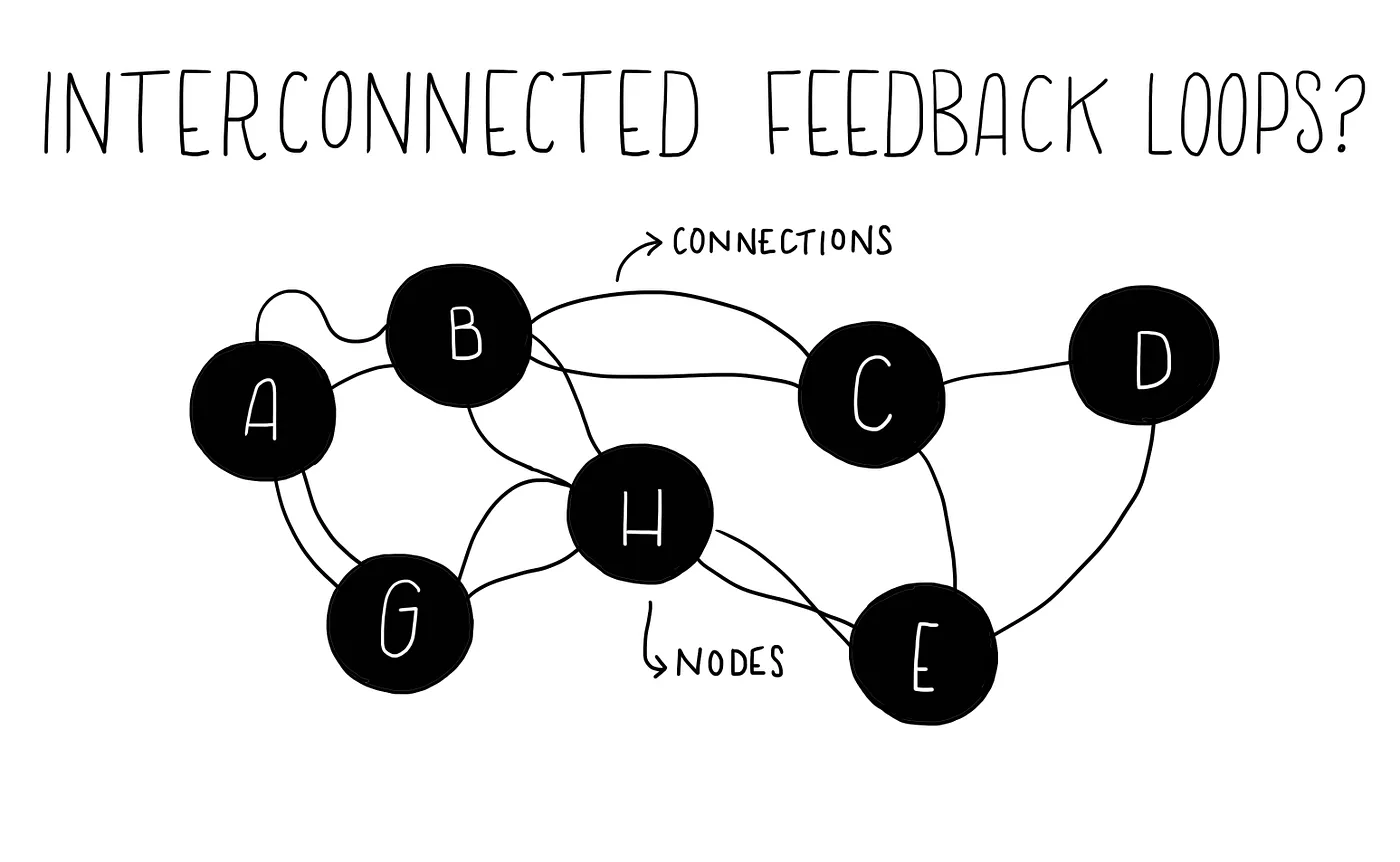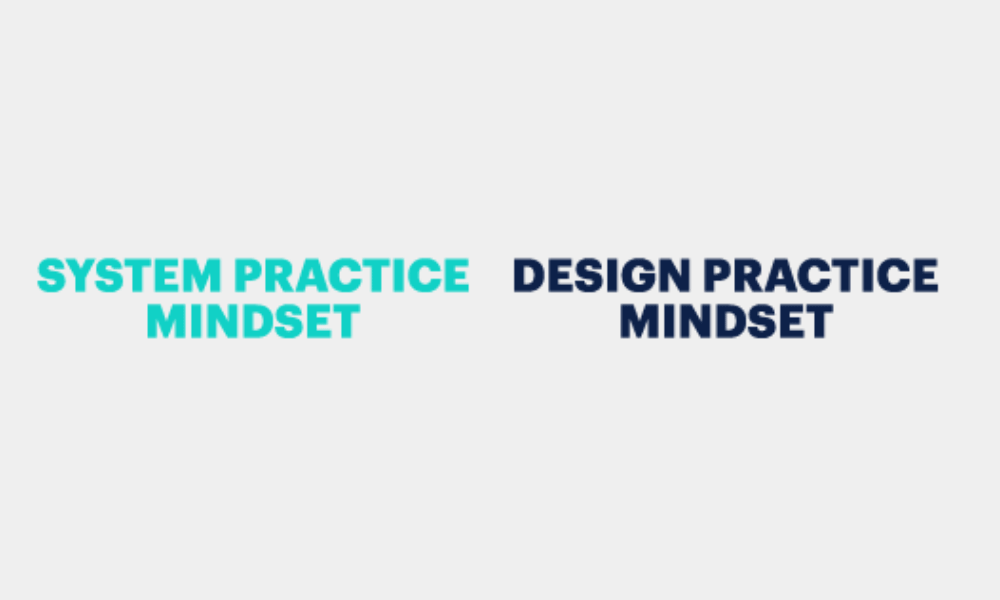Systems Thinking for Designers, thoughts & tangents listening to Sheryl Cababa on UX Cake
Applying systems thinking to my design process is something I’ve been exploring for a couple years. Mostly through my relationship with inclusive design & neurodiversity. The longer I work in product design, the more I think a systems thinking approach is necessary. And the less likely it is to be adopted, at least while the start-up business model is king.
This is a brief reflection and brain dump around systems thinking & design while listening to one of several recent podcast appearances by Sheryl Cababa, promoting her book Closing the loop, systems thinking for designers.This time on a charming podcast I recently discovered down one of my design rabbit holes; UX Cake.
Table of contents:
- Intentional and unintentional consequences
- Systems Thinking vs Design Thinking
- Systems Thinking vs Design Thinking vs Product Development
- Applying systems thinking as a UX designer
- Lessons \& takeaways
- Further reading
Intentional and unintentional consequences
Tarot cards of tech, a deck of cards to help teams make more intentional designs. Cababa’s solution to get teams thinking about what might go wrong and who will be excluded… A series of cards containing questions that reveal information previously unconsidered. This was the start of her involvement with systems thinking.

Five principles/tools within systems thinking that could help a team have fewer unintentional consequences when approaching complex problems are:
- Interconnectedness
- Synthesis
- Feedback loops
- Emergence
- Causation
 Systems mapping is finding the ‘things’ in a system, how they interconnect and act within complex systems 🤷🏻♂️
Systems mapping is finding the ‘things’ in a system, how they interconnect and act within complex systems 🤷🏻♂️
Interconnectedness is the idea that every product or service is a system that is part of and interacts with other systems. These interactions form feedback loops. Synthesis is attempting to understand the interconnectedness. Emergence and causality reveal themselves as a result of understanding the feedback loops.
 “Essentially, synthesis is the ability to see interconnectedness.” – Leyla Acaroglu
“Essentially, synthesis is the ability to see interconnectedness.” – Leyla Acaroglu
Systems Thinking vs Design Thinking
Both competing approaches, systems and design thinking, have been touted as strategies for solving “sticky problems”. They’re very different approaches but aren’t mutually exclusive when tackling complex problems.
“User-centred design is too narrow of a focus”
– Leigh Allen-Arredondo UX Cake host 14:08
User-centred design puts the individual at the centre of the product or service being designed. Rarely does it think about the broader system the product or service is interconnected with.
- Who are the stakeholders you’re not considering by putting the user at the centre?
- What are the consequences of designing for the average user when there’s no budget for testing with a spectrum of users?
 “Moving from the need to ‘seek simplicity” to “embrace complexity” and moving to a “good enough for now” attitude. (Dubberly, 2016) Illustration: Daniel Eames visual designer at Fjord Dublin” – Fjord
“Moving from the need to ‘seek simplicity” to “embrace complexity” and moving to a “good enough for now” attitude. (Dubberly, 2016) Illustration: Daniel Eames visual designer at Fjord Dublin” – Fjord
Are either systems thinking or design thinking right for product design?
Systems Thinking vs Design Thinking vs Product Development
The iterative approach of systems thinking, zooming in and out of a viewpoint to understand the component parts of a feedback loop might produce better-prepared products.
Different from the user-centric iteration of design thinking that creates products optimised for user engagement.
But both are vastly different from the delivery-focused, agile product development iteration.
In the pursuit of profit, user-centric and system-centric approaches are often neglected, disregarding the potential harm to society and overlooking the broader impact of products or services.
This narrow focus disregards the stakeholders involved and fails to address the interconnectedness of systems, resulting in a lack of consideration for the overall user experience and potential unintended consequences.
Applying systems thinking as a UX designer
Expand your view on who the stakeholders are in the products or services you’re designing. Engage with them if possible.
Expand your thinking of the problem space outside the specific problem you are trying to solve.
Applying Lean UX principles to a systematic design thinking approach might help to speed up the systematic design thinking process.
- Lean UX focuses on a collaborative and iterative approach, facilitating quick decision-making and solutions
Expand who you’re involving. Researchers, non-users, disabled users…
Systems thinking can be applied on a smaller scale
Use systems thinking to understand your organisation
Use systems thinking to understand how your feature fits into the broader product or service
An example that Sheryl uses - and points out might not be a good example, - highlights the underlying problem with the complexity of incorporating systems thinking into your UX practice.
If you’re designing a financial services app and use systems thinking to think broader than the immediate problem you are working on, you might be wasting your time. Unless you’re working for a behemoth organisation.
Delivering products as fast as possible is the goal of most tech companies that don’t already have a solid user base. A product designer is already a problem in this landscape. Thinking about the pesky user.
Now they push for thinking about the people impacted by the product outside direct users. And how the product acts as a system, interconnecting with other systems and the forces within those feedback loops…
Design thinking was already shunned for more agile methods years ago. Systems thinking is a good way for a product designer to be seen as problematic or not a team player.
The stakeholders and management should be thinking in systems. The best thing a product designer can do is attempt to communicate the value to stakeholders.
Sprinkle some systems thinking exercises into a design sprint, and use visual communication to highlight a point or use it on a smaller scale. Chip away slowly.
Lessons & takeaways
- Design thinking with an expanded systems thinking view and Lean UX techniques might be the way to implement conscious products at the pace of startup culture.
- Rethinking the confines of the problem might unlock unexpected solutions.
- Thinking in systems can reveal new and innovative ways to improve UX while still considering the broader implications of the product or service.